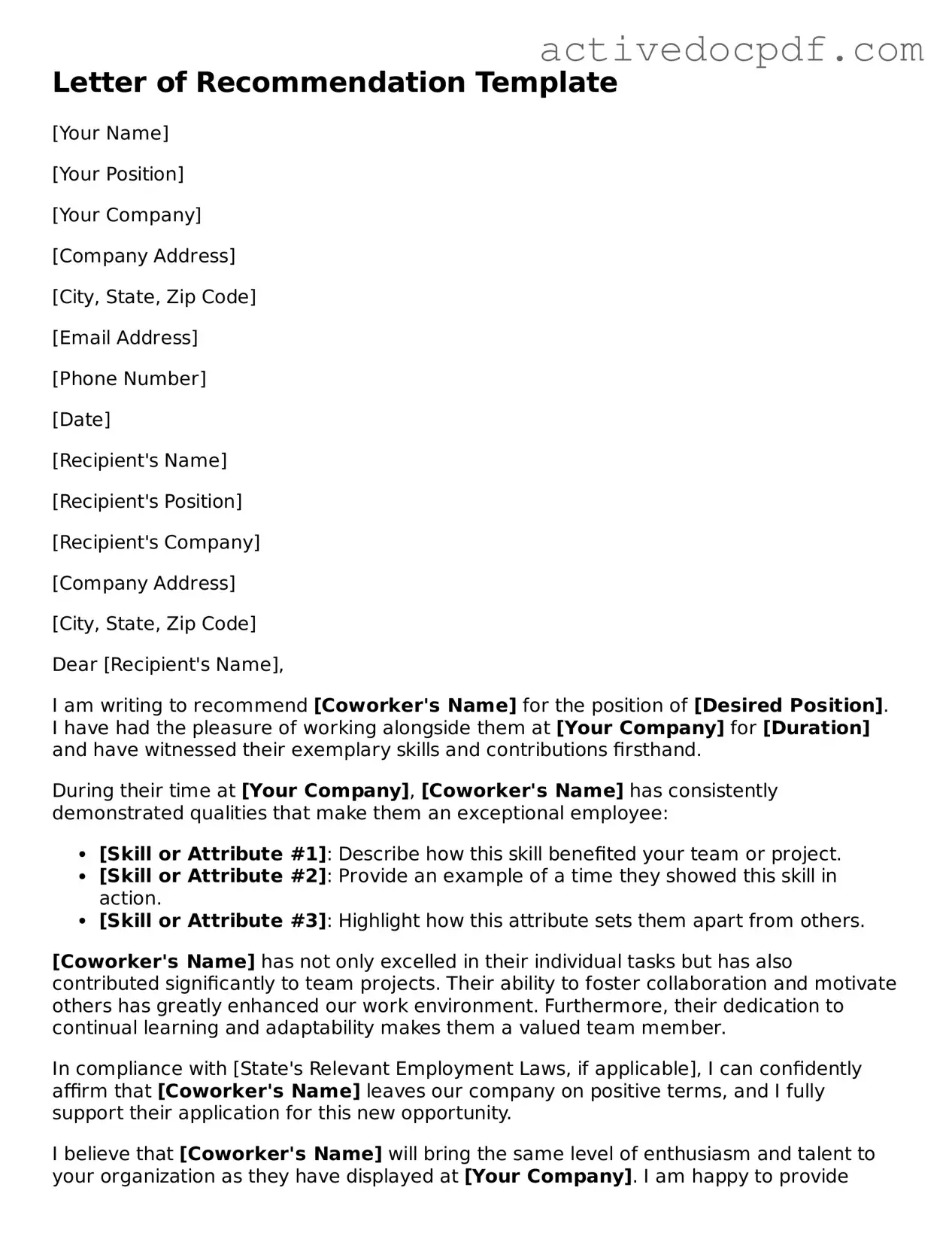The Letter of Recommendation for Coworker form is a structured document that allows individuals to formally recommend a colleague for a job, promotion, or other professional opportunities. This form typically includes sections for the recommender to provide their insights into the coworker's skills, work ethic, and contributions to the team.
This form is intended for individuals who have worked closely with the coworker they are recommending. It is usually filled out by supervisors, managers, or peers who can provide an informed perspective on the coworker's abilities and character.
The form generally requires the following information:
-
The recommender's name and contact information.
-
The coworker's name and position.
-
A description of the relationship between the recommender and the coworker.
-
Specific examples of the coworker's skills and accomplishments.
-
Any relevant personal attributes that contribute to the coworker's effectiveness.
How long should the recommendation be?
The length of the recommendation can vary, but it is advisable to keep it concise yet informative. A recommendation of one to two pages is often sufficient to cover the essential points without overwhelming the reader.
What tone should be used in the recommendation?
The tone should be professional and positive. It is important to highlight the coworker's strengths while maintaining honesty. A balance of enthusiasm and sincerity will make the recommendation more impactful.
Yes, many organizations allow electronic submission of the Letter of Recommendation for Coworker form. However, it is important to check the specific submission guidelines provided by the requesting party to ensure compliance with their requirements.
Is it necessary to provide specific examples in the recommendation?
Providing specific examples is highly encouraged. Concrete instances of the coworker's achievements or contributions can lend credibility to the recommendation and help the reader understand the coworker's qualifications more clearly.
What should be done if I cannot recommend the coworker?
If you feel unable to provide a positive recommendation, it is best to decline the request. Honesty is crucial in these situations. It is more respectful to communicate your limitations rather than to provide a lukewarm or negative recommendation.
How should I conclude the recommendation?
The conclusion should reiterate your support for the coworker and express confidence in their abilities. A simple statement such as, "I wholeheartedly recommend [Coworker's Name] for this opportunity" can effectively summarize your endorsement.
